
The Korean War was fought between North Korea and South Korea from 1950 to 1953. The war began on 25 June 1950 when North Korea invaded South Korea. The war ceased with an armistice on 27 July 1953. North Korea was supported by China and the Soviet Union while South Korea was supported by the United States and the United Nations (UN).

The Taedong River (Korean: 대동강) is a large river in North Korea. The river rises in the Rangrim Mountains of the country's north where it then flows southwest into Korea Bay at Namp'o. In between, it runs through the country's capital, Pyongyang. Along the river are landmarks such as the Juche Tower and Kim Il-sung Square.
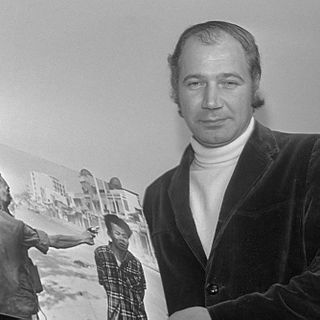
Edward Thomas Adams was an American photographer and photojournalist noted for portraits of celebrities and politicians and for coverage of 13 wars. He is best known for his photograph of the summary execution of Nguyễn Văn Lém, a Viet Cong prisoner, for which he won the Pulitzer Prize for Spot News Photography in 1969. Adams was a resident of Bogota, New Jersey.

Waegwan (Korean: 왜관) is the seat of government for Chilgok County, North Gyeongsang province, South Korea. It consists primarily of the administrative district of Waegwan-eup. It is situated on both sides of the Nakdong River, which is traversed by railroad, automobile and pedestrian bridges.

The Pulitzer Prize for Photography was one of the American Pulitzer Prizes annually awarded for journalism. It was inaugurated in 1942 and replaced by two photojournalism prizes in 1968: the Pulitzer Prize for Feature Photography and "Pulitzer Prize for Spot News Photography", which was later renamed Pulitzer Prize for Breaking News Photography in 2000.
Events from the year 1950 in art.

The Battle of the Pusan Perimeter, known in Korean as the Battle of the Naktong River Defense Line, was a large-scale battle between United Nations Command (UN) and North Korean forces lasting from August 4 to September 18, 1950. It was one of the first major engagements of the Korean War. An army of 140,000 UN troops, having been pushed south to the brink of defeat, were rallied to make a final stand against the invading Korean People's Army (KPA), 98,000 men strong.
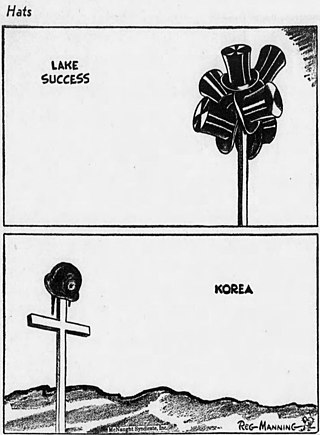
The following are the Pulitzer Prizes for 1951.

The Bridge at No Gun Ri is a non-fiction book about the killing of South Korean civilians by the U.S. military in July 1950, early in the Korean War. Published in 2001, it was written by Charles J. Hanley, Sang-hun Choe and Martha Mendoza, with researcher Randy Herschaft, the Associated Press (AP) journalists who wrote about the mass refugee killing in news reports that won the 2000 Pulitzer Prize for investigative journalism and 10 other major national and international journalism awards. The book looks in depth at the lives of both the villager victims and the young American soldiers who killed them, and analyzes various U.S. military policies including use of deadly force in dealing with the refugee crisis during the early days of the war.
Lake Changjin (Korean: 장진호), known widely in the West as Chosin Reservoir, is a lake located in Changjin County, North Korea. It is most famously known for being the site of the Battle of the Chosin Reservoir, which was an important battle in the Korean War.

The Battle of Taegu was an engagement between United Nations Command (UN) and North Korean forces early in the Korean War, with fighting continuing from August 5–20, 1950 around the city of Taegu, South Korea. It was a part of the Battle of Pusan Perimeter, and was one of several large engagements fought simultaneously. The battle ended in a victory for the UN after their forces were able to drive off an offensive by Korean People's Army (KPA) divisions attempting to cross the Naktong River and assault the city.

Max Desfor was an American photographer who received the Pulitzer Prize for his Korean War photograph, Flight of Refugees Across Wrecked Bridge in Korea, depicting Pyongyang residents and refugees crawling over a destroyed bridge across the Taedong River to escape the advancing Chinese Communist troops.

The No Gun Ri massacre was a mass killing of South Korean refugees by U.S. military air and ground fire near the village of Nogeun-ri (노근리) in central South Korea between July 26 and 29, 1950, early in the Korean War. In 2005, a South Korean government inquest certified the names of 163 dead or missing and 55 wounded, and added that many other victims' names were not reported. The No Gun Ri Peace Foundation estimates 250–300 were killed, mostly women and children.

Frank E. "Pappy" Noel was an Associated Press photographer and the winner of the 1943 Pulitzer Prize for Photography, the second winner of that prize.
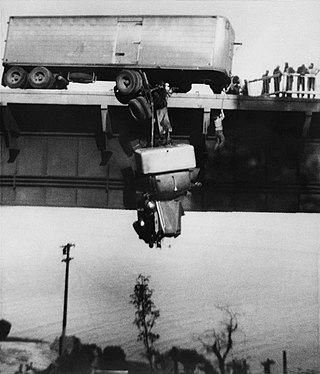
Virginia Margaret (Brown) Schau was an American who was the first woman and second amateur to win the Pulitzer Prize for Photography, which she was awarded in 1954. The award-winning photograph was taken in Redding, California, at the Pit River Bridge and was titled "Rescue on Pit River Bridge". The photograph was taken with a Kodak Brownie camera.
The following lists events that happened during 1950 in the Democratic People's Republic of Korea.
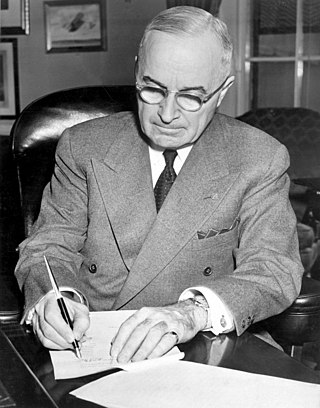
The following events occurred in December 1950:
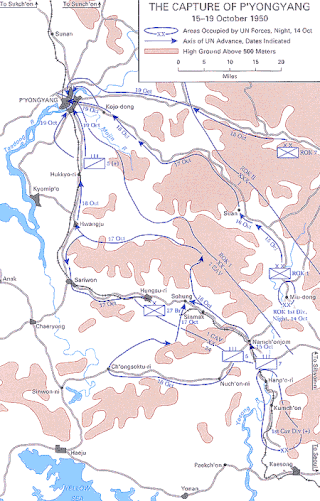
The Battle of Pyongyang was one of the major battles of the United Nations' offensive during the Korean War. Following the Battle of Inchon, the UN forces re-captured Seoul, the capital of South Korea, and proceeded to advance into North Korea. Shortly after advancing, the American and South Korean forces faced the North Korean defenses near Pyongyang, the capital of North Korea, on 17 October.
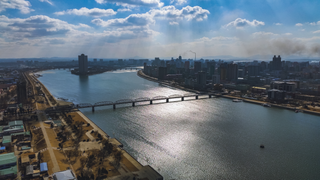
The Taedong Bridge (Korean: 대동교) is a bridge over the Taedong River in Pyongyang, North Korea.
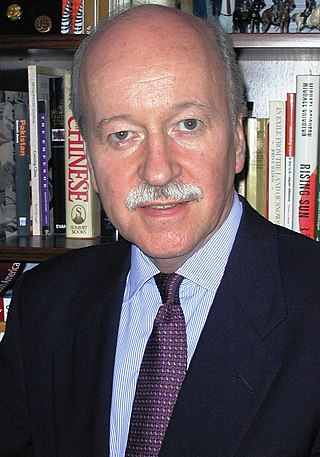
Charles J. Hanley is an American journalist and author who reported for the Associated Press (AP) for over 40 years, chiefly as a roving international correspondent. In 2000, he and two AP colleagues won the Pulitzer Prize for Investigative Reporting for their work confirming the U.S. military’s massacre of South Korean refugees at No Gun Ri during the Korean War.


















